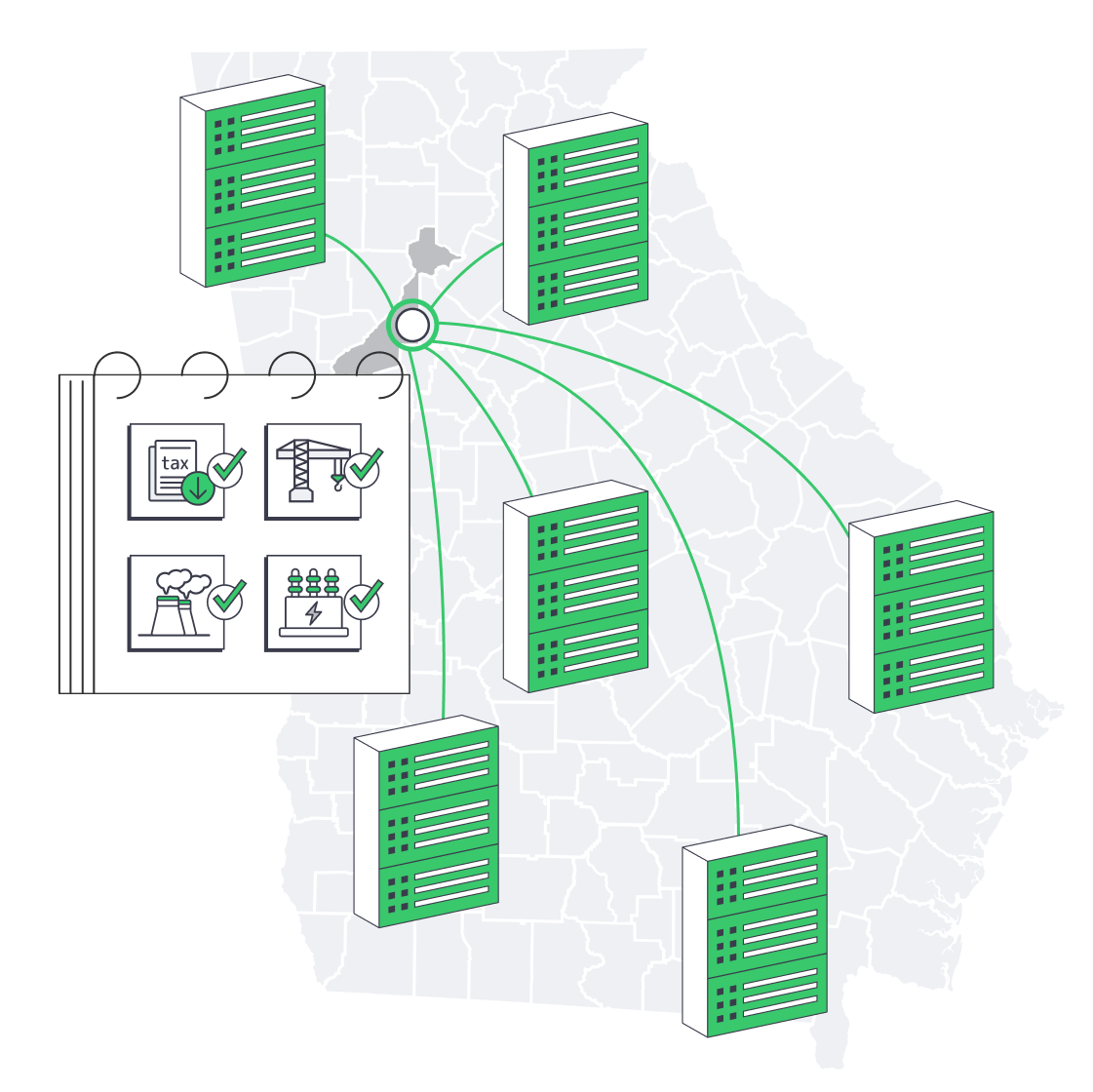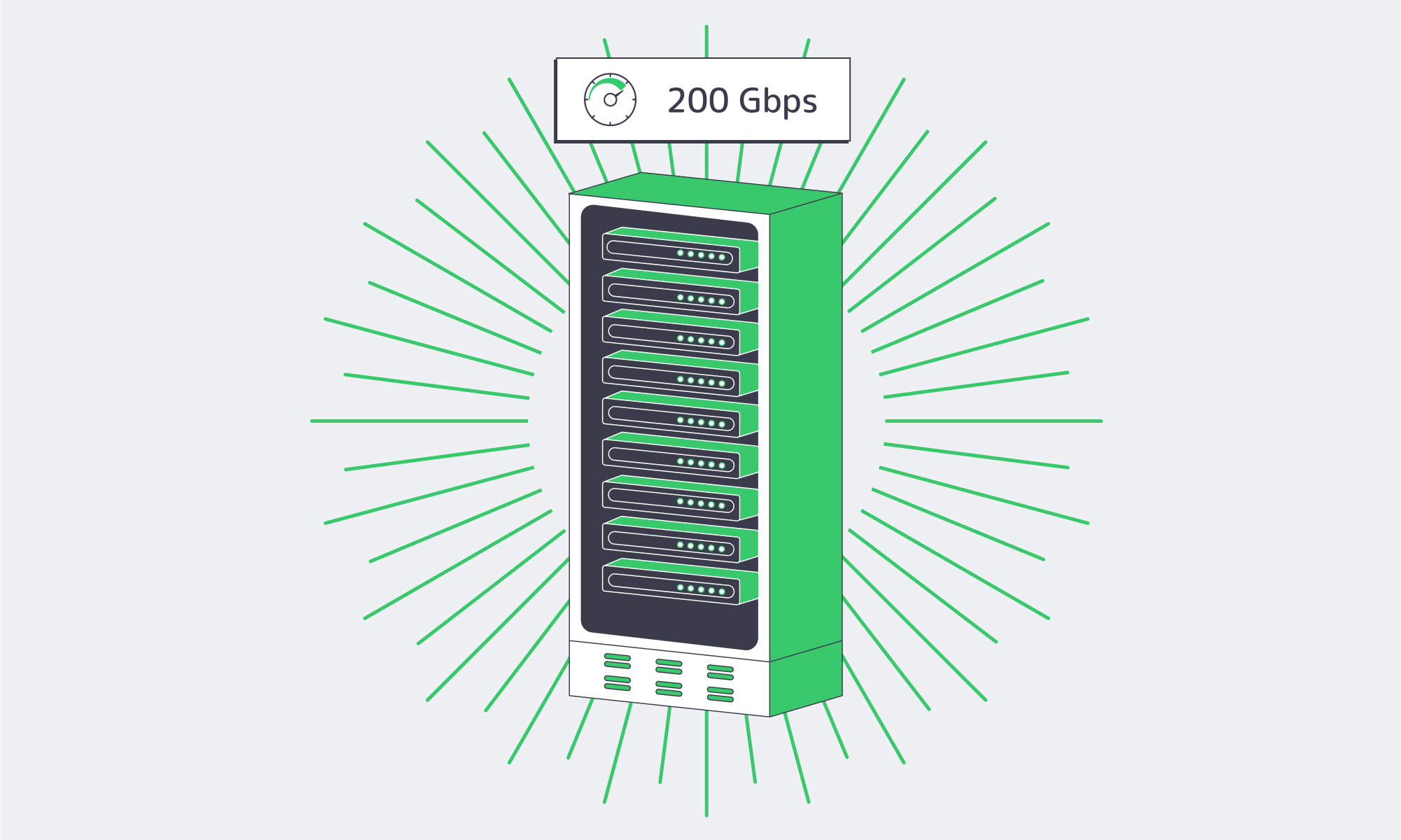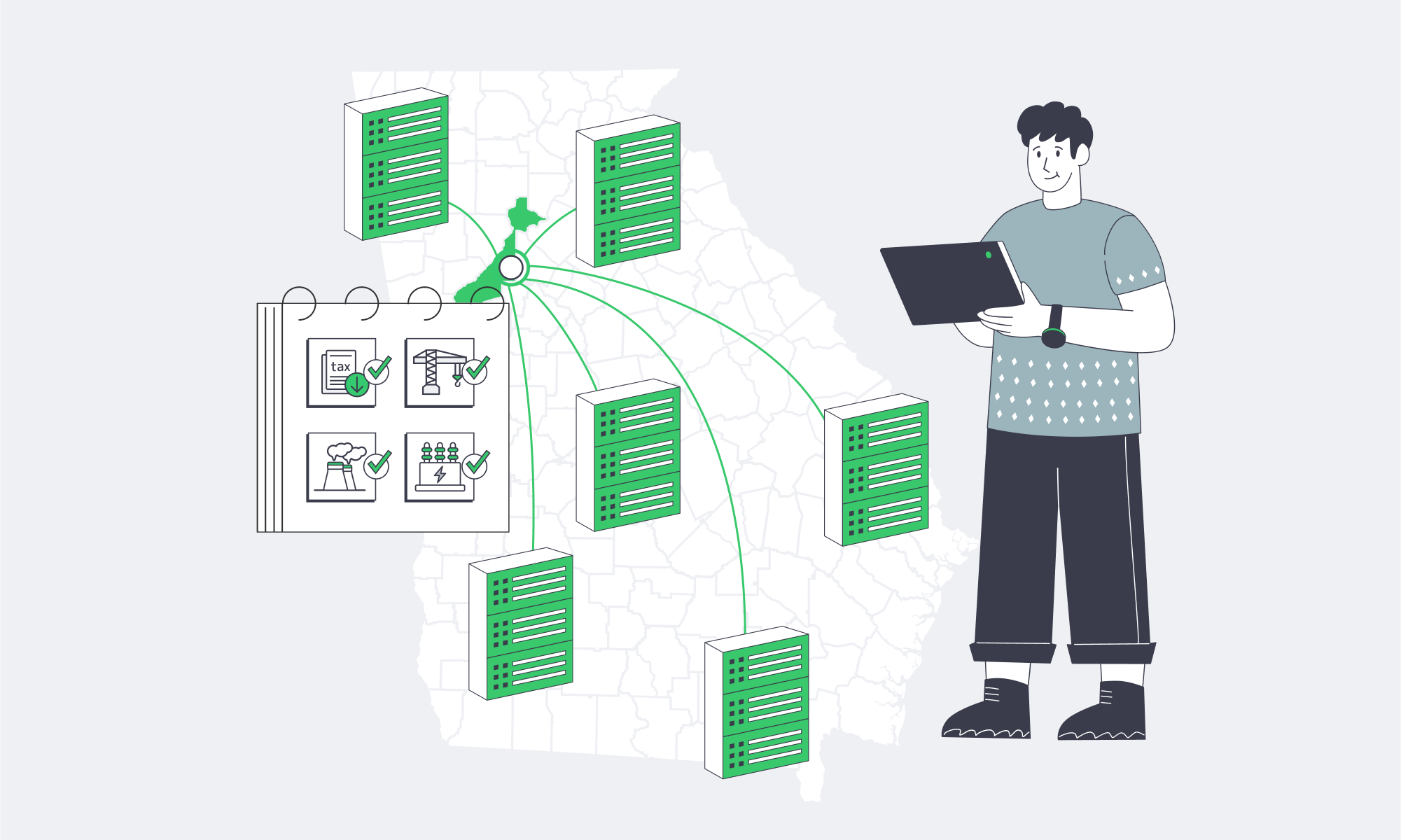Blog

Atlanta’s Edge: Connectivity, Power, and Policy
Atlanta has turned out to be a U.S. metro that fulfills all the criteria of constructing and successfully running modern infrastructure on a large scale. Metro Atlanta is now the second-largest data center hub in the country (only Northern Virginia bests it), and it achieved this thanks to rapid construction, reliable power, and dense connectivity. According to market studies, the amount of data center capacity under construction in the region has doubled every six months since mid‑2023, far outpacing the rest of the country.
The rise of Atlanta is not a coincidence. The region offers vast acreage, dense fiber‑optic interconnection, affordable electricity, abundant water, and significant tax incentives that substantially reduce total cost of ownership. Together, they have drawn multi‑year commitments from leading technology companies and a wave of AI‑focused projects.
Choose Melbicom— 50+ ready-to-go servers in Atlanta — Tier III-certified ATL data center — 50+ PoP CDN across 6 continents |
How Did Atlanta Catch Up So Quickly?
The inflection is characterized by two data points: among major U.S. data-center markets, Atlanta recently rose to the top for net absorption; and the metro now has more than 2 GW under construction in the development pipeline. Taken together, these signals are evidence of near-term demand and long-term readiness in power, space, and connectivity.
A brief look at what changed:
Leasing velocity and construction velocity. Net absorption moved into a national lead, and developers announced multi‑campus projects across the metro, including outlying counties that have capacity for very large footprints and on‑site substations.
Policy alignment. Georgia retained and broadened a full sales‑and‑use tax exemption on qualified high‑technology data‑center equipment; state revenue estimates indicate the incentive waives hundreds of millions of dollars annually at current build rates.
Grid pragmatism.Regulators approved a special tariff framework for ≥100 MW data‑center customers to fund upstream generation and transmission upgrades without shifting costs onto smaller customers—an essential enabler for AI‑era facilities.
What Makes Atlanta so Well Connected?

Network gravity in Atlanta centers on 56 Marietta Street—the Southeast’s signature carrier hotel—where hundreds of networks interconnect in a 10‑story facility that serves as the region’s primary meet‑me point. According to industry counts, the ecosystem contains well over 165 networks, therefore, it serves to be one of the most active sites of interconnection between the Mid-Atlantic and South Florida.
The metro amplifies this core with long‑haul routes radiating north–south and east–west and, most importantly, a direct inland fiber route to the East Coast’s newest submarine‑cable landing cluster. This direct inland route complements Atlanta’s extensive terrestrial fiber and enhances international reach. A 450‑mile terrestrial route connects the Carolina coast to downtown Atlanta’s interconnection hubs (including 56 Marietta). This linkage gives inland workloads a fast, resilient path to transatlantic systems and Latin America‑bound cables.
For operators, this means low, predictable latency across the Eastern U.S. and efficient routes to Europe and the Caribbean without hosting on the coast.
Policy and Community Guardrails
The City of Atlanta has restricted new data centers in much of the urban core, channeling projects toward industrial districts and exurban sites while the statewide equipment tax exemption remains in force after high‑profile debates. Such measures have pragmatically directed growth in areas where there exist land and power with conservation of urban redevelopment objectives.
Dedicated Server in Atlanta: What Performance & Resiliency Can You Achieve?

If you are placing latency-sensitive applications, analytics stacks, or high-throughput services in the Southeast, a dedicated server in Atlanta reduces distance to major population centers and anchors your deployment to a scalable grid and fiber backbone. The inland fiber connection to new coastal cable landings shortens transatlantic paths. The state’s pro-infrastructure posture reduces the risk of power constraints. Taken together, these factors reduce the risk of power unavailability for your equipment.
A structured concise summary of the structural advantages is provided below:
Benefits of Atlanta-Based Data Centers
| Driver | What it is meant in Atlanta |
|---|---|
| Market scale | Second- largest hub in the United States; national net absorption leader in recent times |
| Accelerate momentum | Builds on the flanks Since mid 2023, Under Megafinal capacity, which was two-folds every 6 months |
| Interconnection | 56 Marietta concentrates 165+ networks; primary point for the Southeast |
| Global reach | Direct inland fiber at landing of new coastal cables to downtown hubs |
| Cost advantages | Exempt of sales/use tax of 100% on qualified equipment; high annual saving |
| Grid policy | PSC authorized tariff scheme to support upstream upgrading in 100 MW + users |
How Does Atlanta Handle AI‑Era Density and Thermal Loads?
New facilities across the metro are pre‑engineered for high‑density racks with liquid cooling, taller plenum spaces, and substation capacity added in timed tranches. Together with the rich pool of water in the region and low-cost energy, supported by a wide new generation, operators can roll out large masses of GPU clusters with reduced tradeoffs. The immense amount of current AI-driven expansions is an indication of how ready it is.
What Does Atlanta Dedicated Server Hosting Look Like?

At the work load tier, Atlanta dedicated server hosting typically focuses on:
- Latency‑sensitive east‑of‑the‑Mississippi traffic benefits from short East‑Coast hops and easy reach to Florida and Texas.
- Egress/ingress bandwidth is high. Multi‑homed paths from the carrier hotel core reduce jitter and support sustained high‑throughput applications.
- Hybrid and multi‑cloud adjacency. Dense on‑ramps and exchange fabrics enable private interconnects to public cloud services without leaving the metro.
In the case of teams willing to rent dedicated servers in Atlanta, operational advantage would be to allow the lateral scale, namely, to add neighboring servers in the same campus to maintain the latency and east-coast performance consistent with the rise in demand.
Atlanta Dedicated Server Hosting Lessons
- Capacity and momentum: Atlanta is the only market in the U.S. that has recently surpassed the national leader in terms of absorption coupled with twice the construction pipeline after every couple of quarters.
- Connectivity density: The connectivity density of the anchor carrier of hundreds of networks, the 56 Marietta carrier hotel links directly to the new submarine-cable landings on dedicated inland route.
- Cost structure: 100% sales/use tax exemption on qualified equipment, plus local abatements, reduces TCO significantly.
- Grid readiness: An approved grid‑rate scheme, together with active generation planning, reduces power‑availability risk for high‑density deployments.
What’s the Bottom Line for a Dedicated Server in Atlanta?

The fact that Atlanta is number two in market size, and that it has a carrier hotel core and direct routes to new undersea cables makes it a hosting point that is speedy, scalable and supported by policies. The tax law also gives preference to long term investments. Infrastructure teams seeking a cost‑effective East‑Coast anchor rarely find a stronger combination of performance headroom and long‑term resilience.
Deploy in Atlanta today
Launch dedicated servers in a Tier III Atlanta facility for low latency across the Eastern U.S., high bandwidth, and 24/7 support. Scale GPU and general workloads with reliable power and dense connectivity.